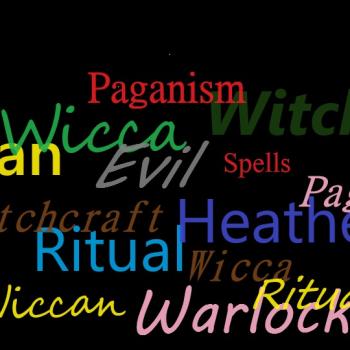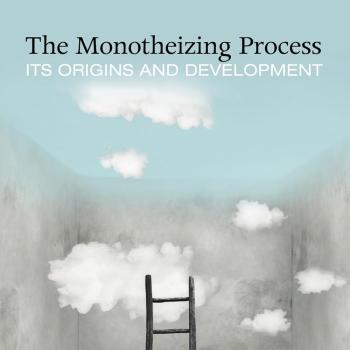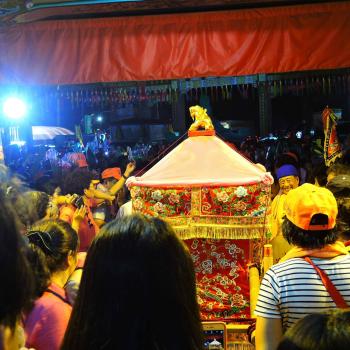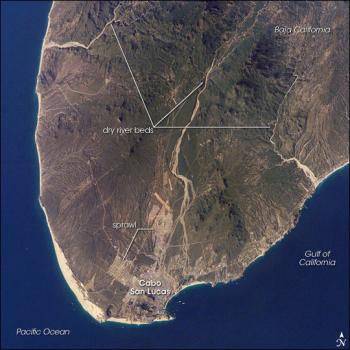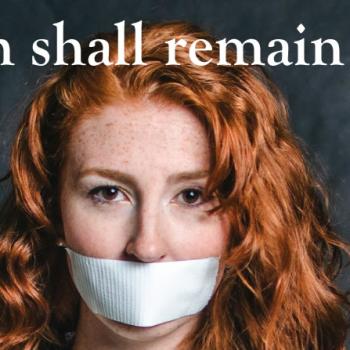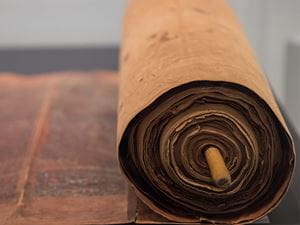
At the end of the seven days of Sukkot (or the Feast of Tabernacles) comes a celebration called Simchat Torah, meaning “Rejoicing with the Torah.” This festive holiday marks the end of the annual cycle of liturgical Torah readings, and the beginning of the new cycle. Thus, during the holiday, the last parashah (or section) of Deuteronomy is read (from one set of scrolls), immediately followed by the first parashah of Genesis (from a different set of scrolls), thus ending and beginning the annual cycle of Torah readings.
Simchat Torah is a magnificent celebration of the Jewish people’s relationship to the Torah. Its focus is less on the God of Judaism, and more on God’s word, the scriptures, and the covenant people’s love for God’s word. It highlights the ‘love affair’ that a faithful Jew should have with God’s word, and the resulting joy available to those who have such a relationship.
As noted, it is a rather celebratory commemoration—hence the name, “reveling” or “rejoicing with the Torah.” On Simchat Torah, the scrolls are removed from the ark (in which they are stored) and then paraded through or around (hakafot) the synagogue seven times in a jubilant procession. The commemoration is characterized by a universal aliyah, where each of the congregation’s members are called to the bimah for a reading of a portion of the Torah. However, during Simchat Torah—in addition to readings from the Torah—each member of the congregation comes up and dances and sings while carrying or embracing the Torah scrolls, in a rather lengthy and festive ritual. In some congregation, this is done in honorific order—starting with the oldest member of the congregation and working down to the youngest, or in similar symbolic order. Other congregations seem to have little order at all—and the celebratory nature of the commemoration overrides any sense of order. (Of course, how festive things get really depends on the makeup and temperament of a given congregation.)
While, in the bulk of synagogues, men and women dance together as the scrolls are carried, in Haredi and Orthodox synagogues, the dancing with the scrolls is primarily participated in by the men. Women and girls may do their own dancing with a scroll on their side of the partition (or mechitza), but—in Orthodox congregations—the two genders do not typically mix, even on a holiday as celebratory and seemingly relaxed as this. That being said, in some Orthodox and Conservative synagogues, this is the only time of the year that women will cross over into the men’s section of the synagogue and, for some, the only time of the year that a woman would carry the Torah scrolls.
There are number of other symbolic acts engaged in by some congregations on this holiday. For example, some Hasidic Jews see the dancing with the Torah as a symbol for the reality that the Jewish people are supposed to be the “feet” of the Torah, carrying God’s word to the world. Carrying the Torah scrolls out into the streets and dancing with them—parading them before the masses—is perceived by some as a fulfillment of ‘carrying the Torah to the world’ through publicly displaying it. Other Jewish congregations will have their parishioners stand in a circle and then unroll the Torah scroll around them, so that the participants are entirely encircled by God’s word. This is seen by some as a symbol of the protection that comes to the Jew who faithfully uses God’s word in his or her life. Just as, on this holiday, they are encircled by the word of God, the power and protection of God is available to all who love and faithful use God’s word in their lives.
Simchat Torah technically comes on the second day after the conclusion of Sukkot (or the Feast of Tabernacles) and is preceded by a one-day holiday know as Shemini Atzeret. However, for some Jews (particularly in Israel), the two holidays are considered a singular one, with Simchat Torah being the second day of Shemini Atzeret. Most Jews, however, commemorate them as two entirely separate holidays. One source notes, “While Shemini Atzeret’s significance is somewhat unclear [other than its focus on prayers for rain], Simchat Torah [on the other hand] conveys a clear message about the centrality of Torah in Jewish life. It is both a source of Jewish identity and a precious gift from God. Simchat Torah is the day on which the whole community gathers to come into direct contact with the Torah and to express our joy in having received it.”
3/14/2023 4:17:32 PM
